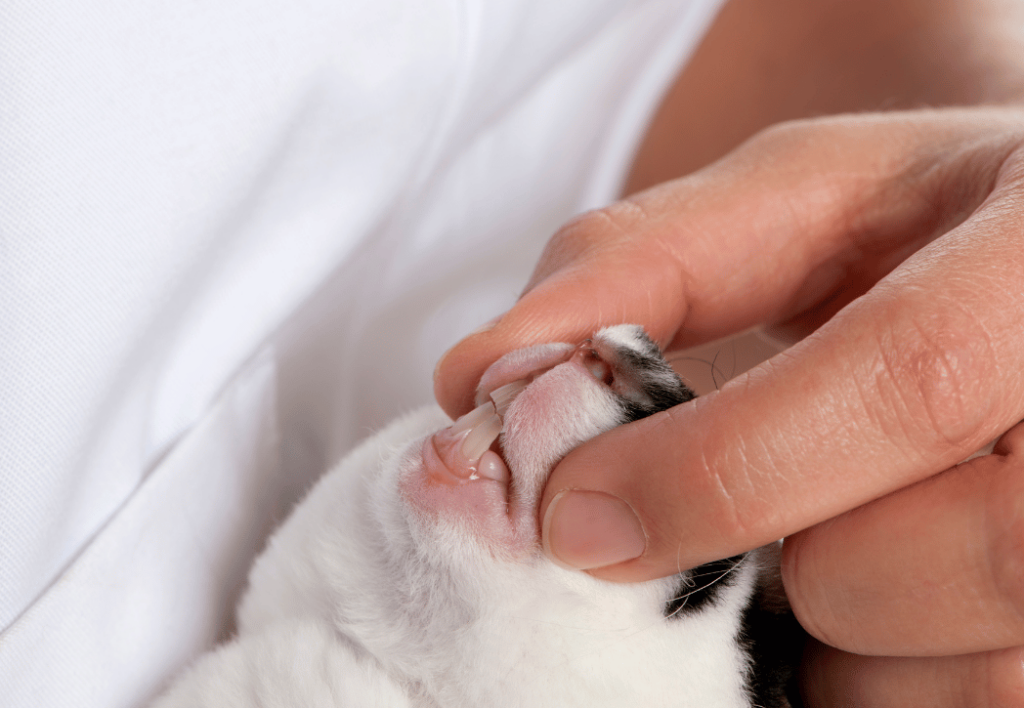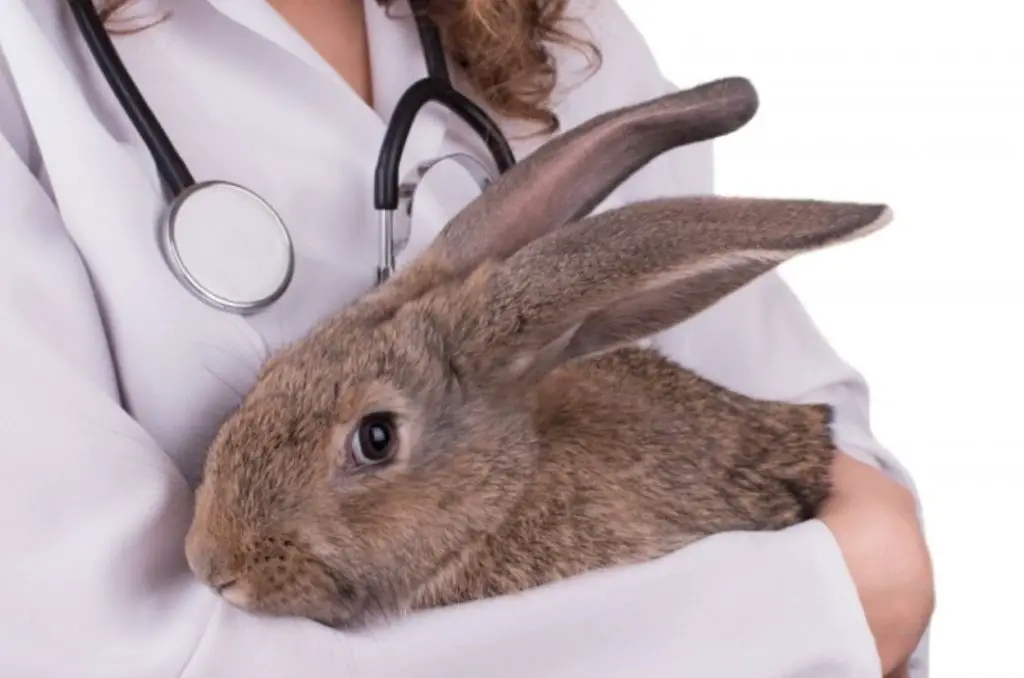Last Updated on July 21, 2023 by Emma Reynolds
Rabbit teeth are constantly growing, and if not trimmed, can cause a variety of health issues. Therefore, it is important to know how to properly trim a rabbit’s teeth to keep them healthy and happy.
One common reason for overgrown rabbit teeth is malocclusion, which is a genetic condition that causes the teeth to grow unevenly. This can result in painful sores and difficulty eating. Regular trimming can help prevent these issues and keep your rabbit comfortable.
There are several methods for trimming rabbit teeth, including using wire cutters or taking your rabbit to a veterinarian for a process called burring. It is important to use caution and care when trimming your rabbit’s teeth to avoid causing injury or pain. By learning the proper techniques and tools, you can help keep your rabbit’s teeth healthy and prevent potential health problems.
Why Trim Rabbit Teeth
Rabbits have continuously growing teeth which means they need to be worn down to prevent overgrowth. In the wild, rabbits wear down their teeth by chewing on tough, fibrous foods like grass and hay. However, pet rabbits may not have access to such foods, leading to overgrown teeth that can cause discomfort and health problems.
Overgrown teeth can cause a variety of issues, including pain, difficulty eating, and even abscesses. In severe cases, overgrown teeth can grow into the rabbit’s jaw and cause serious infections. Therefore, it is important to regularly check your rabbit’s teeth for signs of overgrowth and trim them if necessary.
Teeth trimming should only be done by a trained professional, such as a veterinarian or a rabbit-savvy groomer. Attempting to trim your rabbit’s teeth at home can be dangerous and lead to injury. A professional will have the necessary tools and expertise to safely trim your rabbit’s teeth.
Regular dental check-ups are also important for preventing overgrown teeth. During a check-up, a vet can assess your rabbit’s teeth and determine if they need to be trimmed. They can also check for any other dental issues, such as malocclusion, which may require more frequent trimming.
Overall, trimming your rabbit’s teeth is an important part of their dental care. Regular check-ups and professional trimming can help prevent overgrown teeth and keep your rabbit healthy and happy.
Signs of Overgrown Teeth

Rabbits have teeth that never stop growing, and if they are not worn down properly, they can become overgrown. Overgrown teeth can cause serious issues for your rabbit, including difficulty eating, weight loss, poor hair coat, drooling, and wetness under the chin.
Some of the signs that your rabbit may have overgrown teeth include:
- Longer and more tusk-like teeth than usual
- Decrease in grooming
- Loss of appetite
- Difficulty eating
- Weight loss
- Poor hair coat
- Drooling or wetness under the chin
- Redness around the lower jawline
If you notice any of these signs, it is important to take your rabbit to a veterinarian who can examine their teeth and determine the best course of action. Ignoring overgrown teeth can lead to serious health problems, including abscesses and infections.
Regularly checking your rabbit’s teeth can help prevent overgrowth. If you notice any signs of overgrown teeth, it is important to take action promptly to prevent further complications. In the next section, we will discuss how to trim your rabbit’s teeth safely and effectively.
Examining Rabbit Teeth
Regularly examining your rabbit’s teeth is important to ensure their dental health and overall well-being. When examining your rabbit’s teeth, it’s important to look for signs of malocclusion, which is a condition where the rabbit’s teeth don’t meet properly. This can cause pain, discomfort, and difficulty eating and drinking.
To examine your rabbit’s teeth, start by gently opening their mouth and looking at their front teeth, also known as incisors. These teeth should be straight and evenly aligned. If you notice any crooked or misaligned teeth, it could be a sign of malocclusion.
Next, check your rabbit’s molars, which are located at the back of their mouth. These teeth are responsible for grinding food, so it’s important to ensure they are healthy and in good condition. If you notice any signs of overgrowth or uneven wear, it could be a sign of dental problems.
You should also inspect your rabbit’s gums for any signs of redness, swelling, or bleeding. Healthy gums should be pink and firm to the touch. If you notice any abnormalities, it could be a sign of gum disease or other dental issues.
It’s important to note that examining your rabbit’s teeth can be challenging, especially if they are uncooperative or resistant. If you’re having trouble, consider seeking the help of a veterinarian or experienced rabbit owner.
Regularly examining your rabbit’s teeth is crucial for their dental health and overall well-being. Look for signs of malocclusion, check the front teeth and molars, and inspect the gums for any abnormalities. If you notice any issues, seek the help of a professional to ensure your rabbit receives proper care.
Tools and Equipment Needed
Trimming your rabbit’s teeth requires some basic tools and equipment. Here are the necessary items you will need:
- Wire Cutters: Small, sharp wire cutters are the primary tool for trimming your rabbit’s teeth. It is important to choose a pair that is appropriate for the size of your rabbit’s teeth, and to keep them clean and sharp.
- Towel: A towel is useful for wrapping your rabbit and keeping them still during the teeth trimming process. It also helps to protect your hands from any accidental bites or scratches.
- Sit-tight Paste (Optional): Sit-tight paste is a specialized paste that can be applied to your rabbit’s fur to help keep them calm and still during the teeth trimming process. This is an optional item, but it can be helpful for rabbits that are particularly skittish or anxious.
- Nail Clippers (Alternative): While wire cutters are the preferred tool for trimming rabbit teeth, some owners may choose to use nail clippers as an alternative. However, it is important to note that nail clippers may not be as effective as wire cutters, and there is a higher risk of cracking or splitting the tooth.
It is important to have all of the necessary tools and equipment on hand before beginning the teeth trimming process. This will help to ensure that the process goes smoothly and safely for both you and your rabbit.
How to Trim Rabbit Teeth
Trimming your rabbit’s teeth is an important part of their overall health care. If your rabbit’s teeth are not trimmed regularly, they can become overgrown, leading to injury or even difficulty eating. Here’s how to trim your rabbit’s teeth:
Preparing Your Rabbit
Before you start trimming your rabbit’s teeth, make sure you have all the necessary tools. You will need a pair of rabbit tooth trimmers, which you can purchase at a pet store or online. You may also want to have some styptic powder on hand in case you accidentally cut the quick of the tooth.
Next, you will need to prepare your rabbit for the procedure. Make sure your rabbit is calm and relaxed before you start. You may want to give them a treat or some hay to distract them.
Restraining Your Rabbit
Once your rabbit is calm and relaxed, you will need to restrain them. Gently hold your rabbit in your lap or on a table, making sure they are comfortable and secure. You may want to wrap them in a towel to help keep them still.
Trimming Your Rabbit’s Teeth
Now it’s time to trim your rabbit’s teeth. Start by examining your rabbit’s teeth to determine which ones need to be trimmed. Use the rabbit tooth trimmers to trim the teeth at the correct angle. Be careful not to cut the quick of the tooth, as this can cause bleeding and pain.
If you accidentally cut the quick, apply some styptic powder to stop the bleeding. After trimming the teeth, use a nail file or emery board to smooth the edges of the teeth.
It’s important to note that if you are not comfortable trimming your rabbit’s teeth, you should consult a veterinarian. Trimming your rabbit’s teeth can be a delicate procedure, and it’s important to do it correctly to avoid injury to your rabbit’s tongue or other parts of their mouth.
Trimming your rabbit’s teeth is an important part of their overall health care. By following these steps, you can help keep your rabbit’s teeth healthy and prevent injury or difficulty eating.
Aftercare and Follow-Up
After trimming your rabbit’s teeth, it is important to provide proper aftercare to ensure their dental health. Here are some tips to follow:
Chew Toys
Chew toys are essential for maintaining your rabbit’s dental health. Offer your rabbit a variety of toys made from safe materials such as willow twigs and cardboard. These toys will help your rabbit wear down their teeth naturally, preventing overgrowth.
Healthy Diet
A healthy diet is crucial for preventing dental problems in rabbits. Ensure your rabbit’s diet is high in fiber and includes plenty of Timothy hay and grass. These foods are abrasive and help wear down your rabbit’s teeth naturally.
Follow-Up Appointments
It is important to schedule follow-up appointments with your veterinarian to monitor your rabbit’s dental health. Your veterinarian will be able to determine how often your rabbit needs their teeth trimmed and provide advice on maintaining their dental health.
Observing Your Rabbit
Keep an eye on your rabbit’s behavior and eating habits after their teeth trimming. If you notice any changes in their behavior or appetite, contact your veterinarian immediately.
When to Seek Veterinary Help

While it is possible to trim your rabbit’s teeth at home, there are certain situations where it is best to seek veterinary help. If your rabbit has any health problems or is an exotic pet, it is recommended to consult a veterinarian before attempting to trim their teeth.
If your rabbit has dental disease, abscesses, malocclusion, or misalignment, it is best to have a veterinarian perform the teeth trimming procedure. These conditions can cause pain and discomfort for the rabbit, and anesthesia may be necessary to ensure their safety during the procedure.
In addition, if your rabbit has spurs or peg teeth, it is best to seek veterinary help. These issues can cause drooling, lethargy, decreased appetite, weight loss, and difficulty eating. A veterinarian can properly diagnose and treat these issues to ensure your rabbit’s health and well-being.
If you notice any of these symptoms in your bunny, it is best to seek veterinary help as soon as possible. Delaying treatment can lead to further health problems and complications. A veterinarian with experience in rabbit dentistry can provide the necessary care and treatment to keep your rabbit’s teeth healthy.
While it is possible to trim your rabbit’s teeth at home, it is important to seek veterinary help in certain situations. If your rabbit has any health problems, dental issues, or is an exotic pet, it is recommended to consult a veterinarian before attempting to trim their teeth.
Conclusion
Proper aftercare and follow-up appointments are crucial for maintaining your rabbit’s dental health. By providing your rabbit with chew toys, a healthy diet, and scheduling follow-up appointments, you can ensure your rabbit’s teeth stay healthy and prevent future dental problems.
Frequently Asked Questions
Emma is a young, enthusiastic veterinary assistant based in Portland, Oregon. She has a natural affinity for all things fluffy, with rabbits being her absolute favorite. She got her first rabbit, a Holland Lop named Pippin, at the age of 7 and has been head over heels for them ever since. Emma holds an Associate Degree in Veterinary Science from the Portland Community College and has been working in a small animal clinic for the past 2 years.

